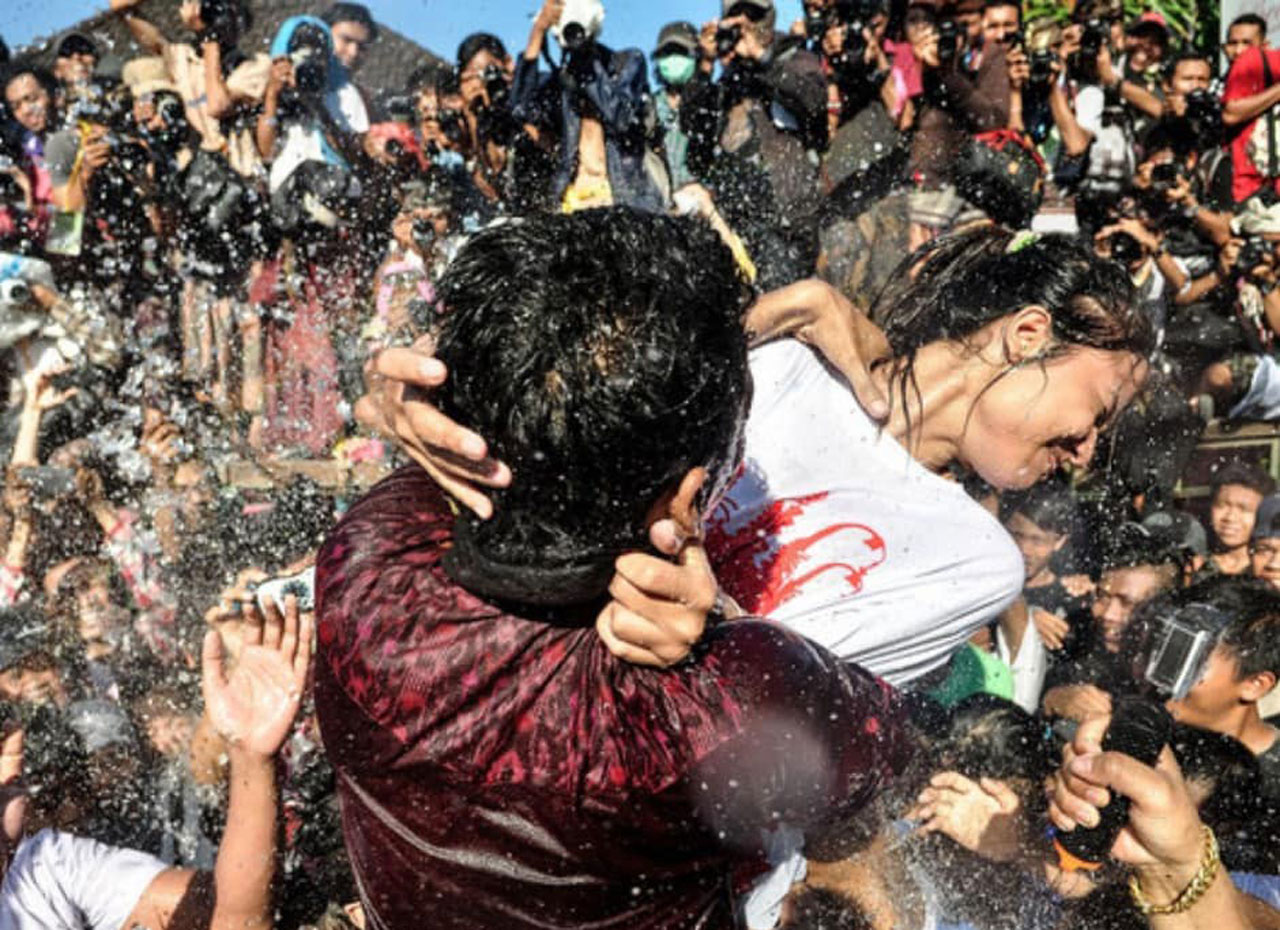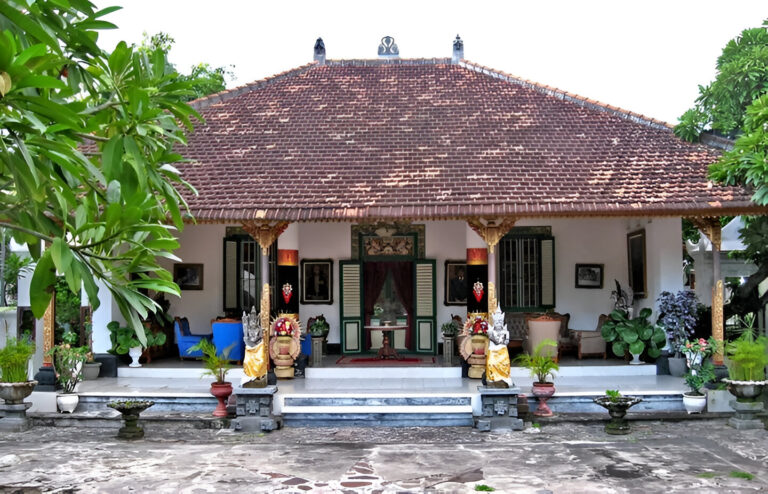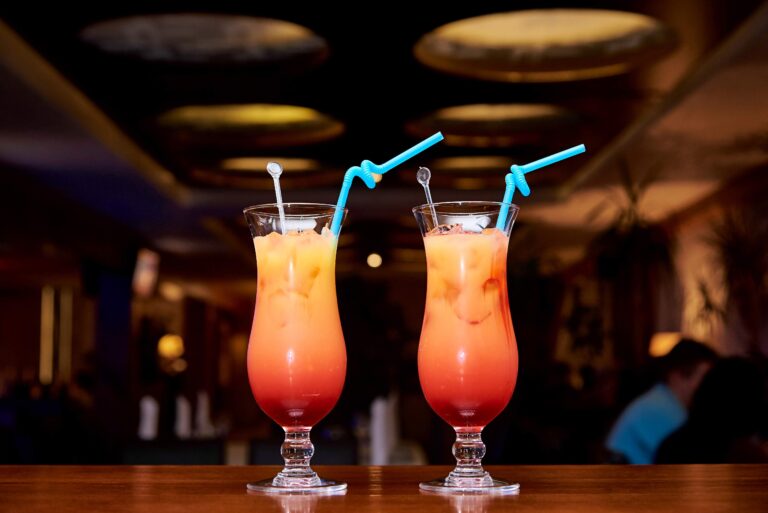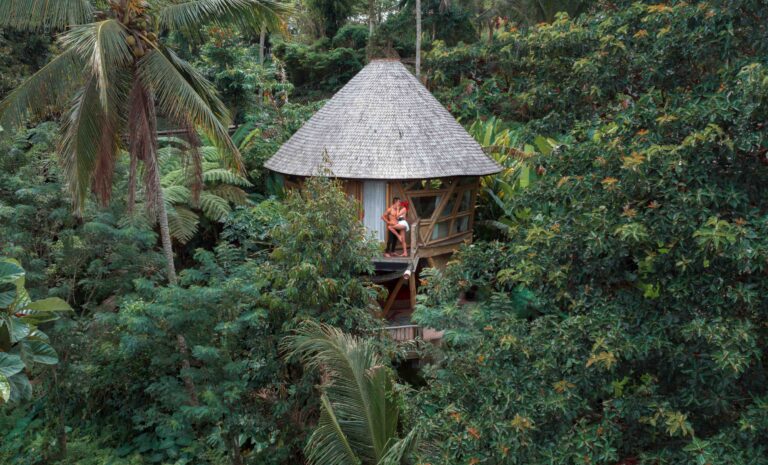For more than 200 years Sesetan subdistrict in Bali has been the meeting place for unique festivities – the Omed-Omedan festival of hugging, pulling, and kissing.
If you want to learn more about the culture, or even attend the event to share excitement and fun with the local community, this guide is for you.
Summary: All You Need To Know To Visit Omed-Omedan Festival
- Come early to find a good spot to watch the pulling and kissing ritual, and bring water and sunscreen – March is still somehow the end of the rainy season, so it will be very hot during the day.
- Respect the ceremony and avoid taking photos of young people without their permission.
- When and where: the next day before Nyepi (usually, it is March) at Sesetan village in Denpasar, Bali.
- Omed-Omedan is free for visitors.
About Omed-Omedan Tradition
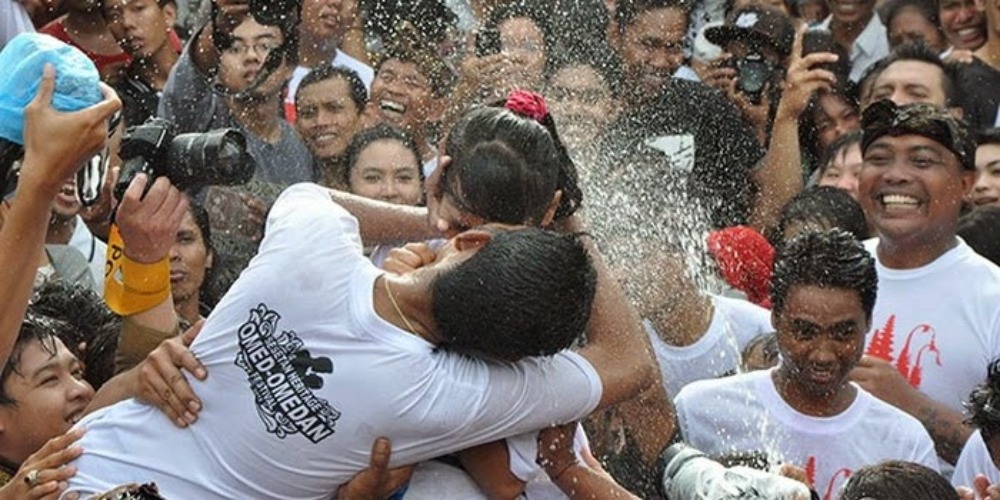
Sesetan Heritage Omed-Omedan Festival (SHOF) is a Balinese annual mass kissing festival held on Ngembak Geni Day (a day after Nyepi) to celebrate the Balinese new year according to the Saka calendar.
The words Omed-Omedan in the Balinese language mean “pull-pull” or tug of war.
This ritual is known for decades or even centuries and involves single young people, splashing, pulling, and occasional kisses on the cheek. Locals say many couples formed that way!
Omed-Omedan continues to be a symbolic act of unity and life, strengthening the connection between neighbours, young people, and preserving ancestral culture.
What Is The Meaning Of Omed-Omedan?
Omed-Omedan festival is based on Asah, Asih, Asuh principles for Balinese Hindus, which, in general terms, mean support, love, care, and growth we share with our neighbours, friends, and family.
Balinese believe that the sense of togetherness, laughter, and embracing each other are the best methods to drive evil spirits away from the village.
Locals see the festival of hugs, games, and kisses as the best way possible to welcome the Balinese New Year.
From a spiritual and religious point of view, Omed-Omedan is also a staple ceremony because if people don’t do it, they worry that some diseases or tragedies will happen in the village.
Based on one of the legends of Omed-Omedan history, Ida Bhatara Sesuhunan, who had a high spiritual status, ordered residents to continue the tradition. So as long as they do so, they are under His protection.
Lastly, village elders are convinced that getting up, moving, playing games, and being outdoors is good for one’s physical and mental health!
Kissing Or No Kissing: The Controversy
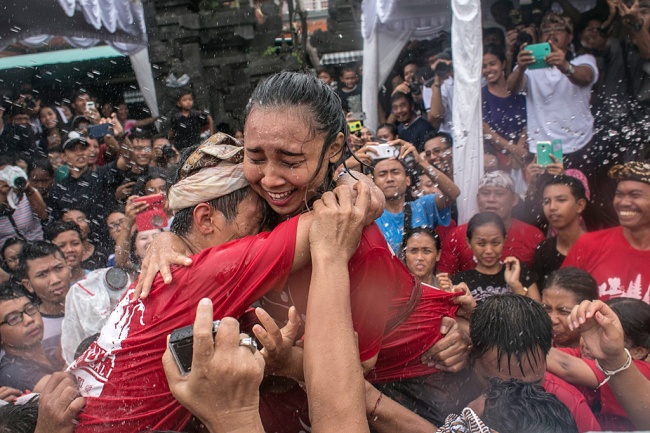
Lots of controversy happened around the festival as some members of conservative communities deemed this ritual inappropriate.
However, Balinese elders spoke about it, highlighting that the tradition of Omed-Omedan doesn’t have any romantic context and is focused more on spiritual beliefs and bringing the community together.
Plus, historically, youths at Omed-Omedan weren’t actually kissing, but hugging tightly, sometimes pressing their cheeks or foreheads together.
Very rarely, young people actually touch lips, and some sources claim the rules actually prohibit it, and elders will try to spray water and stop people from kissing like that.
The Origins Of Omed-Omedan
We’ve heard at least three legends about the origins of the Omed-Omedan tradition.
Upset King & Tug Of War
According to this theory, Omed-Omedan’s history dates back to the 17th century, when it was a traditional game called Med-Medan of the Puri Oka people.
At that time, the games were just as fun: young men and women got together, played tug of war and hugged. As you can imagine, these games were loud, vibrant, and the noise could get upsetting.
So one day, one of the elder members of a royal family (some say king, but probably not!), Ida Bhatara Kompaing, who was gravely ill, just had had enough of that. He asked to be brought outside to stop the games once and for all.
However, magic happened: once he was outside and got to the groups of young people, he was healed and ordered the games to be held every year!
There were two attempts to ban this kissing ritual (By the Dutch and in 1984), but allegedly, after the ban, the villagers got ill, and even two wild pigs started fighting. Locals thought of it as a very bad omen and resumed the tradition.
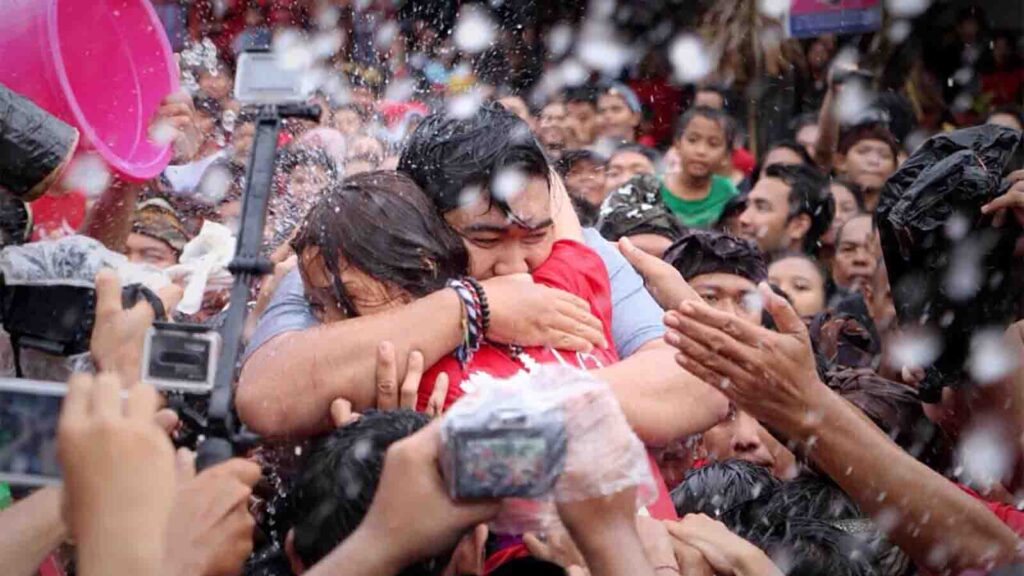
Migrants Games
Another story tells us that the Omed-Omedan tradition sprouted from the desire of newcomers to know each other.
So in the 70s, when many people were moving to South Denpasar and didn’t know each other, they decided to host a pulling and kissing ceremony to build the community.
Fighting Pigs
Unlike the first legend, this theory places the origins of Omed-Omedan to that very hour-long fight between two pigs.
It is said that there were two pigs: male and female pigs, and that the fight represented the clash between good and evil elements in nature, just as Omed-Omedan does.
How Does Omed-Omedan Ritual Work
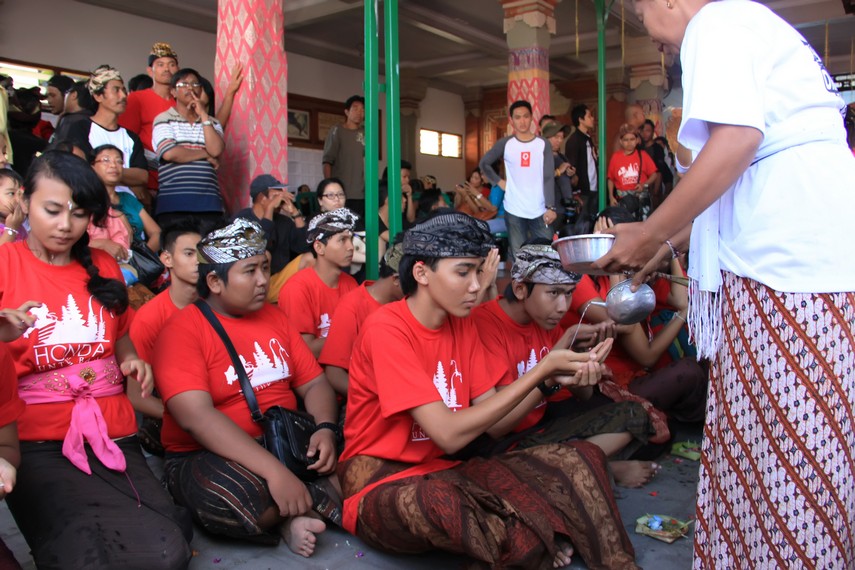
The celebration is often planned to start in the afternoon, but the audience gathers much earlier.
The main participants are strictly unmarried young people, between 16-30 years old, often from high school.
Before The Ceremony
Before the Omed-Omedan starts, the leader of the Banjar Kaja Sesetan community will give a little speech to explain the rules and the tradition.
Next, the participants move to the temple courtyard, where a Hindu leader, the highest priest, will lead communal prayers to invoke safety and bless the youths with holy water.
Sometimes, the leaders will also remind everyone about the guiding principles of Balinese Hinduism, harmony, the importance of spiritual life, and reflect on the past year, as the Omed-Omedan tradition is still a part of New Year’s celebrations.
To commemorate the pig fight, village performers do the Barong Bangkung dance, accompanied by traditional gamelan and gong music to scare away any bad spirits.
Omed-Omedan Ritual
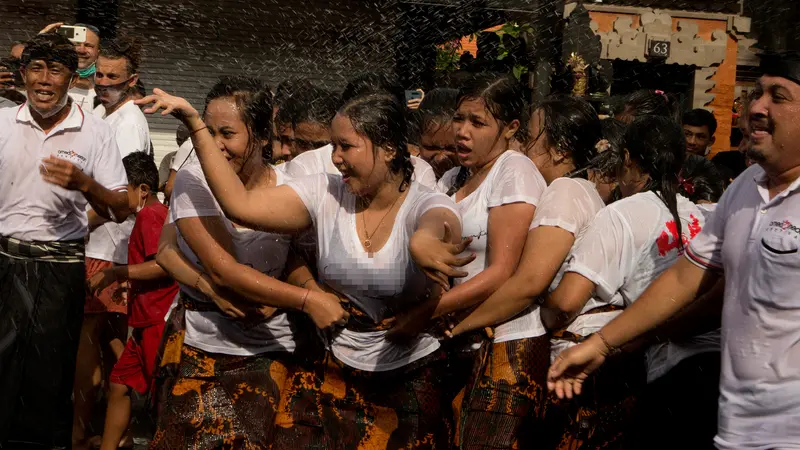
A chorus of a 2008 song dedicated to the Omed-Omedan festival describes what happens best:
Omed-omedan, saling kedengin (pulling), saling gelutin (hugging).
Diman-diman… (kissing)
For starters, youths, usually between 16-21 years old (rarely up to 30), will be divided into two groups: 40 men (teruna) and 60 women (teruni).
Each group forms a line on the main street in front of the Banjar Kaja Sesetan, with a leader of each group in front and the rest behind them, with their hands on the waist of someone in front of them.
If more than 100 people are willing to play, there will be several “waves”.
The groups face each other, and the leaders from opposing teams hold each other’s hands.
Then, one of the pecalangs (village security) will announce the beginning of the games!
Now, there are two versions of how the games can go:
- Tug of war. Girls are pulling their leader backwards, and boys are doing the same, to pull the leader of the other team on their side, thus winning. The pecalangs then spray water on everyone to signal the end of the round and cool everyone off. It goes on and on until everyone has participated in the game.
- Tug of war & kissing. In this case, once the games start, the male and female sides approach, the leaders grab each other’s hands, pull, maybe “wrestle” or hug, and press cheeks or kiss. Then everyone is doused with water to finish the round. In this game, there is still a goal to pull the leader of the other team across an invisible “line” towards your team.
After The Ceremony
The event lasts no more than two to four hours, usually, and everything will be done before 5 PM/
All participants and officials will gather back at Banjar Kaja Desa Pakraman Sesetan to relax, share a meal, cool off, and the community leaders will hold another talk on community principles, future, and thank everyone for participating.
More Of The Festival Frenzy
You will find food stalls, music, craftsmen selling little trinkets, and even comedy shows in the Balinese language along the streets and on the stage in the neighbourhood.
Where To See The Omed-Omedan Festival – Banjar Kaja (South Denpasar, Bali)
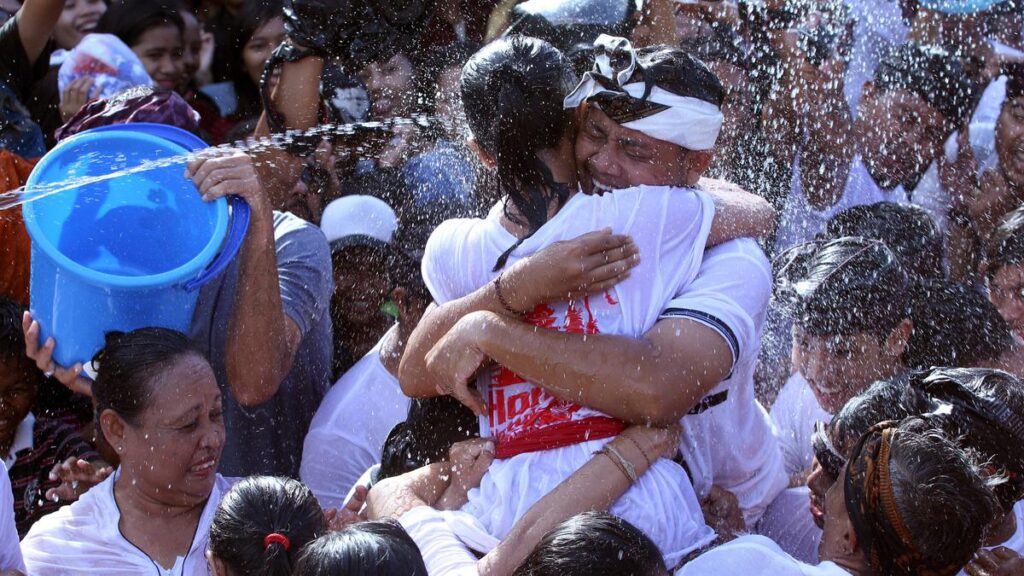
The only village where you can still witness this unique tradition is Banjar Kaja, Sesetan Village, Denpasar, Bali.
It is located in South Denpasar, just 3 km from the city centre.
When Is Omed-Omedan?
In the 1980s, regulations brought by Parisada Hindu Dharma Indonesia (PHDI) Central set a time frame for the ceremony – Ngembak Geni Day, in the afternoon.
Omed Omedan Dates For 2026, 2027, 2028
In the coming years, Omed Omedan will happen the next day after Nyepi, on the following dates:
- March 20, 2026
- March 9, 2027
- March 27, 2028
If you wish to visit, note that the airport will be closed on Nyepi, so you will need to arrive in Bali a couple of days before.
FAQs
Can Foreigners Participate In Omed-Omedan?
While foreign visitors are welcome to watch the festival, they can’t participate in the “pulling and kissing” part of the ritual.
What Is The Kissing Tradition In Bali?
Omed-Omedan is the Balinese kissing ritual, where two crowds of men and women face each other, pull, laugh, kiss, and elders pour water on them as a symbolic act of blessing.
What Does Bali Kiss Mean?
There can be two meanings to Bali kiss – referring to the kissing ritual of Omed-Omedan held annually the day after Nyepi, and also what tourists call Bali kiss or the very first scratch someone gets riding a scooter in Bali.
What Is The Day After Nyepi?
Ngembak Geni is the first day after Nyepi.
As during Nyepi it is forbidden to have lights on, the day after Nyepi is literally called “relighting the fire” or Ngembak Geni in Indonesian.
Final Thoughts On Omed Omedan Tradition
If you want to visit lesser-known parts of the island and explore authentic Balinese culture, Omed-Omedan offers exactly that experience.
Plus, it gives a warm sense of community, happiness, youth, and human connection, deeply rooted in the culture and history of Bali.

